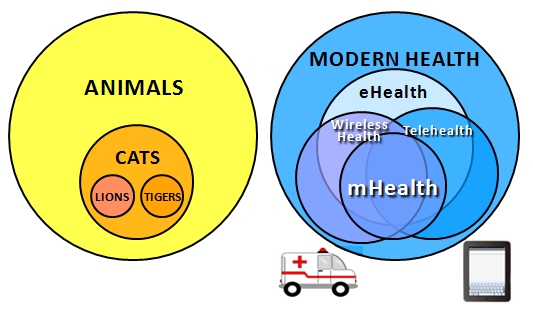The $49 Doctor Visit, Online

Instead of searching for a doctor, calling for an appointment, taking time off work, and then driving to the doctor’s office, just connect online with video.
Healthcare just got a whole lot easier for consumers, thanks to American Well and a new telehealth service that connects people to physicians through their iPad, iPhone or Android device as well as any web browser.
The company’s technology manages physician availability and allows consumers to either choose a specific doctor or simply connect to the next available one. They can also review doctors’ professional profiles and see how other patients rate them.
Doctors accessed via American Well are currently available for live video consults 24 x 7 x 365 in 44 states and the District of Columbia. The $49 cost of a 10-minute video call can be paid via credit card, debit card or health savings account, and at that rate it costs less than a typical office visit, which averages $68 and can reach up to $120 in urgent care clinics. The service may also eliminate non-emergency visits to the emergency room, where costs can exceed $1,000 for even simple issues, according to the Health Care Blue Book.
Online visits qualify for most high deductible healthcare plans and are increasingly covered by other health insurance plans. American Well works closely with various health plans, national pharmacy retailers, hospitals and government agencies to make safe online care ubiquitous and affordable.
To download the new American Well mobile app, visit the Apple App Store or Google Play store. American Well’s new consumer service can also be accessed via the web at www.americanwell.com.
Physician Reaction
Dr. Teresa Myers loves telemedicine and practices for American Well in her spare time. She recently took a call from a woman on a business trip who thought she’d gotten strep throat. Myers didn’t mean to scream when the patient pointed her phone’s camera & flash toward the back of her throat, but she couldn’t restrain herself. “Oh my God! You’ve got exudate!”
“What does that mean?,” asked the patient who hoped to get a prescription without going to the ER. Dr. Myers explained that it’s the white discharge often visible on one’s tonsils when they have the highly contagious strep, and that she had yelled because she’d never expected to see it so clearly during a phone visit.
Myers later said, “That was probably the most rewarding 10 minutes,” doing an exam, making a diagnosis, and writing a prescription in 10 minutes.
Patient Reaction
My Reaction
Hey, I’m behind this. Our rising health care costs already cause many patients to seek affordable alternatives, including medical tourism offshore, so why not encourage them to visit the very best providers here instead?
Given advancements in technology, and related but slower advancements in regulatory oversight, I see companies like American Well leading us into a more efficient future where advice, tests and procedures move down-market over time from specialists to general practitioners, PAs, NPs, RNs, medical aids, and health consumers themselves. I see many functions moving from hospitals to clinics, satellite clinics, homes, and mobile devices. And I see eventual changes in licensing that allows care to extend across state lines, and even international boarders.
More on Telemedicine
From Telemedicine Becoming the New House Call…
- Telemedicine includes video calls with patients, video consultations among specialists, remote monitoring of sensor devices, and more, all aimed at increasing service, improving outcomes, and lowering costs.
- It doesn’t just reduce travel in rural communities but in urban ones as well, eliminating the need for a caretaker to take off time from work or for the elderly to seek other means of transportation.
- Many physician tasks can be performed by PAs, nurse practitioners, nurses, and aids if they have remote access to experts through their smartphones and tablets, and those experts can be supported by big data supercomputers (e.g. IBM’s Watson) that do the analytics and help with diagnostics.
- And many of these tasks can be done in retail clinics or homes, reinvigorating the House Calls concept.
- Regulations must change to allow tasks to shift with new technologies and to allow remote care that extends across state lines. If it’s OK for a patient to call their primary care physician while on vacation, or when the physician is at an out of town conference, shouldn’t it also be OK for the patient to sign up with a service that provides remote care from anywhere? For that to work, some functions of state medical boards may need to transition to federal agencies, and there are many stakeholders who will fight to protect the status quo.
- Regulations must also change to allow video conferences in some cases. It makes no sense to require regular in-person visits to renew prescriptions for lifelong conditions such as enlarged prostrate when a video call would due. Instead, public health policies should promote and encourage the use of appropriate telemedicine solutions.
- For maximum market reach, providers should adapt to whatever technology individual consumers already have and know, including a PC with Skype, iPhone’s FaceTime, xBox Kinnect, etc. Several cloud-based services are starting to provide the necessary transcoding to do that. See https://www.mhealthtalk.com/2011/03/video-conferencing-for-home-healthcare/.
- Telemedicine is just one reason why our National Broadband Policy must close the digital divide, promote BIG Broadband, encourage open competition, and allow municipalities to install public broadband services when others refuse to provide competitive services. Another reason is Telecommunting to save fuel and highway congestion while allowing employers to hire the best workers no matter where they live and giving workers access to new employment opportunities without uprooting families. And other reasons include lifelong Distance Learning to address skills gaps as technologies evolve, e-commerce even from rural towns, e-government, and improved national security. See http://cazitech.com/big_broadband.htm.
- With over 72% of the globe connected via mobile technology and over 80% of US physicians owning tablet devices, the promise of mobile health to profoundly impact the delivery of healthcare cannot be understated.



*I am in need of a doctors visit for BP medication refill and annual full panel lab work.
Can you set-up the lab work and provide the results?